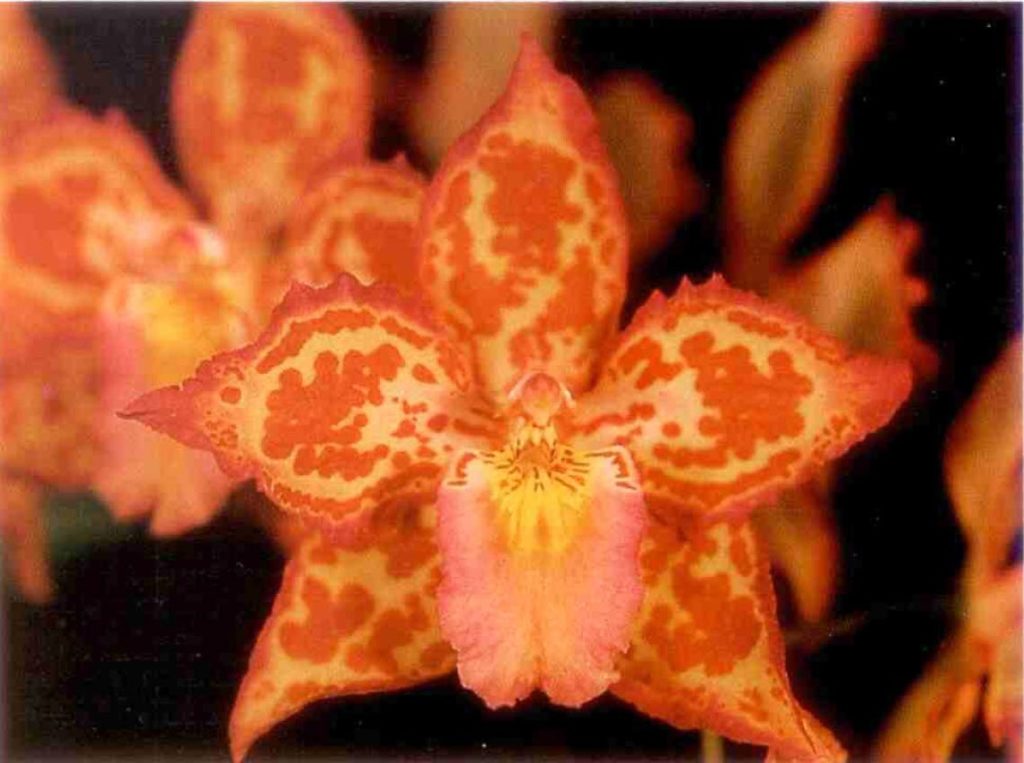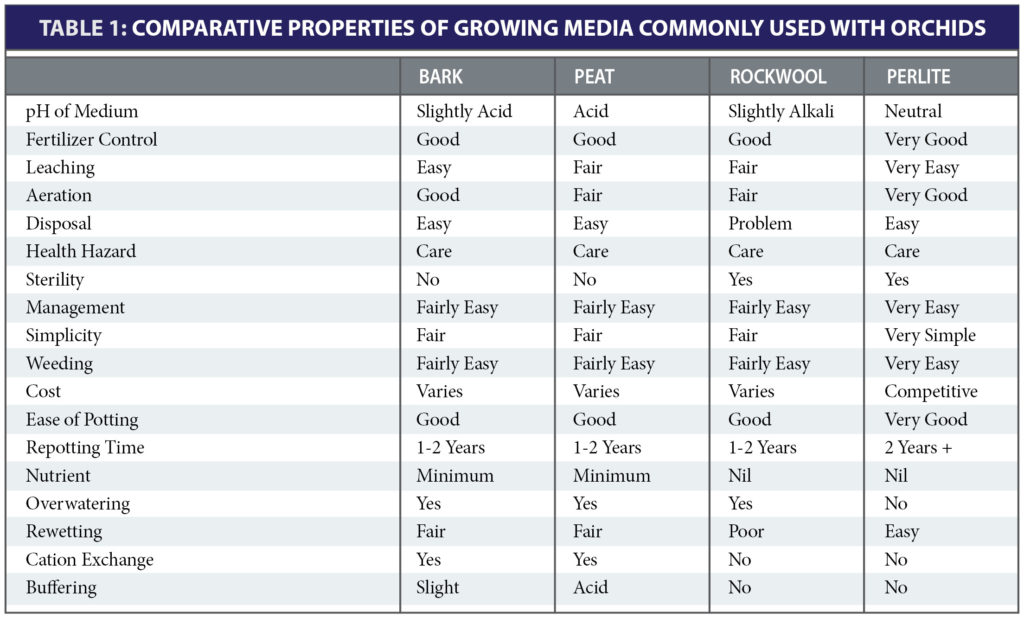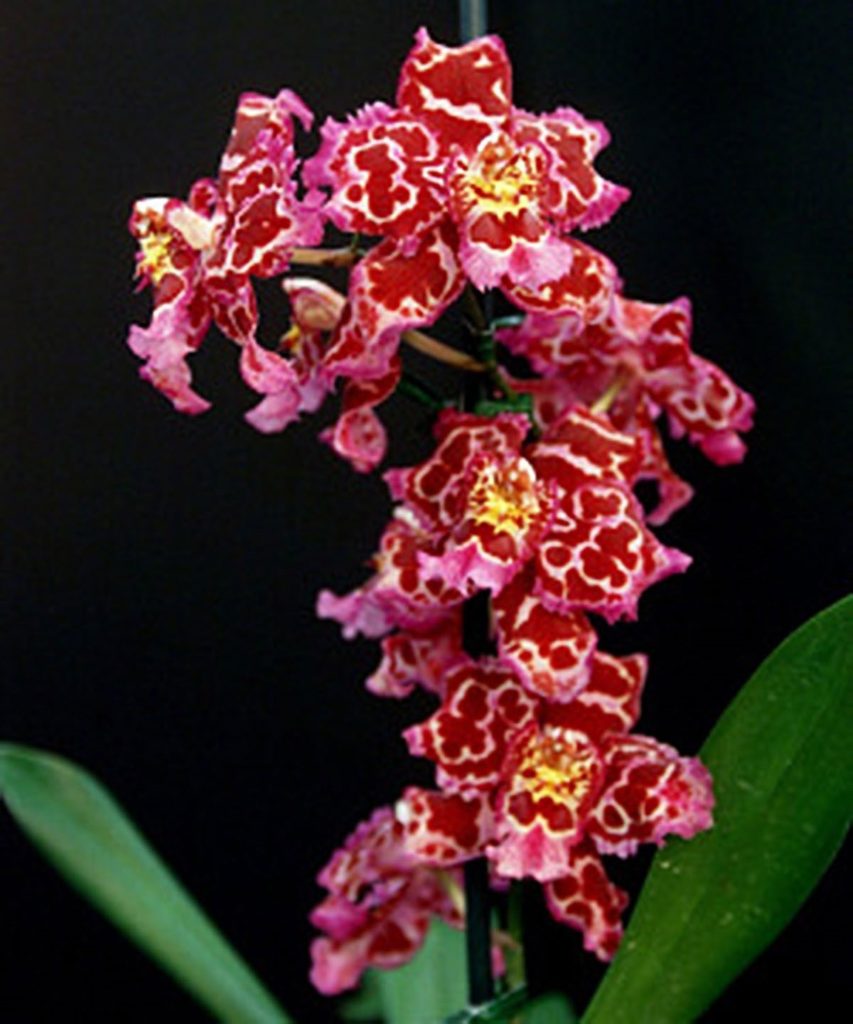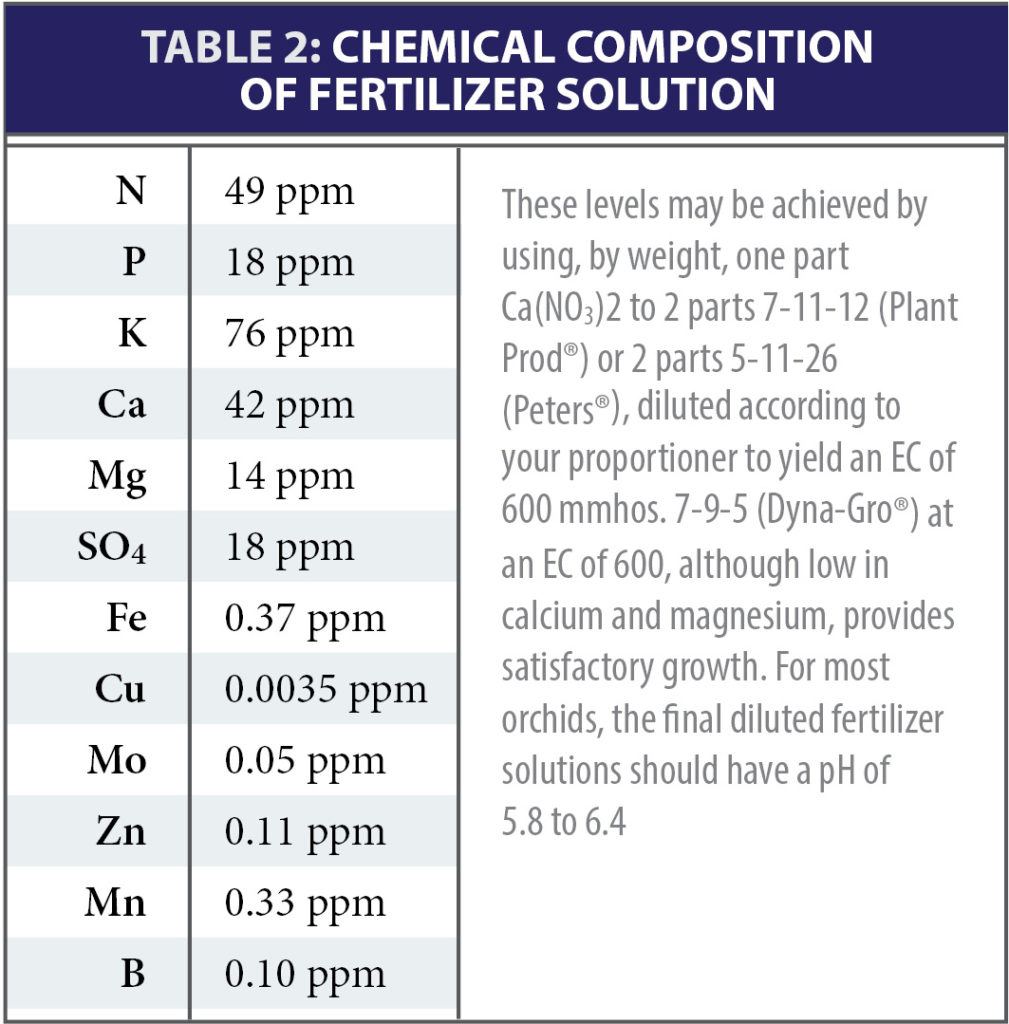by Dr. Wally Thomas and Barb Thomas, 1988
Narrative and Data Reprinted with Permission by the Perlite Institute, Inc.
Outstanding success growing orchids using a hydroponic perlite reservoir technique.
This article summarizes five years of outstanding success in growing orchids at Charles Island Gardens (West Vancouver, Canada) using the perlite reservoir technique with intermediate-size perlite. This method, by which all major genera of orchids can be grown, allows for a constant supply of nutrient to the plant by taking advantage of the unique capillary action of perlite. An outstanding characteristic of this method of culture is that one cannot overwater and that there is always excellent aeration. Table 1 compares the excellent properties of perlite with those of other commonly used growing media. Additionally, perlite is a naturally occuring material.
Horticultural perlite (about 1/8 inch, 3mm in diameter) is pretreated by pouring perlite into a tub of water and fertilizer solution. The perlite is pushed into the water several times and the floating perlite is skimmed off. This wet perlite is a wonderfully easy material with which to pot. Such pretreated perlite shows no evidence of compaction after three years.


Potting and Repotting
Ordinary pots may be converted for reservoir use by inserting a cup in the bottom. Specific reservoir pots and saucerless hanging baskets are excellent.
To plant a 10-inch (25cm) saucerless basket, the basket is filled to 2 inches (5cm) from the top with perlite. Thirty to forty seedlings are planted and the surface covered with pea gravel. To ease the transition, cling wrap material is wrapped around the hanging wires leaving an opening at the top. The plants are bottom-watered for the first six weeks, after which time the wrap is removed and the plants treated normally.
Mature plants are best repotted when new growth has just started. Plants are set a little deeper than with other media, and pea gravel is used to hold the plant firmly in place and to decrease evaporation. Repotting is only required when space for new growth is needed. There is no plant setback when repotting from perlite to perlite.Eight inch (20cm) deep beds are constructed of wood, lined with 6 mil black polyethylene, with an overflow outlet at 1-1/2 inches (4cm) from the bottom to provide a reservoir. Overflow solution is collected for recycling.

Bed Growing
Eight inch (20cm) deep beds are constructed of wood, lined with 6 mil black polyethylene, with an overflow outlet at 1-1/2 inches (4cm) from the bottom to provide a reservoir. Overflow solution is collected for recycling.
Watering/Fertilizer
Pots should be heavily watered before they dry. One cannot overwater with the perlite system. Charles Island Gardens has experienced no disease in five years and the system offers the potential for simple and inexpensive automation.
A complete hydroponic fertilizer suitable for most orchids is shown in Table 2.
1988 Article Reprinted with Permission by the Perlite Institute, Inc. 2014
To download a .pdf of the Growing Orchids in Perlite brochure, click here.
If you have technical questions on this topic, please email the technical contacts listed on our contact page.

